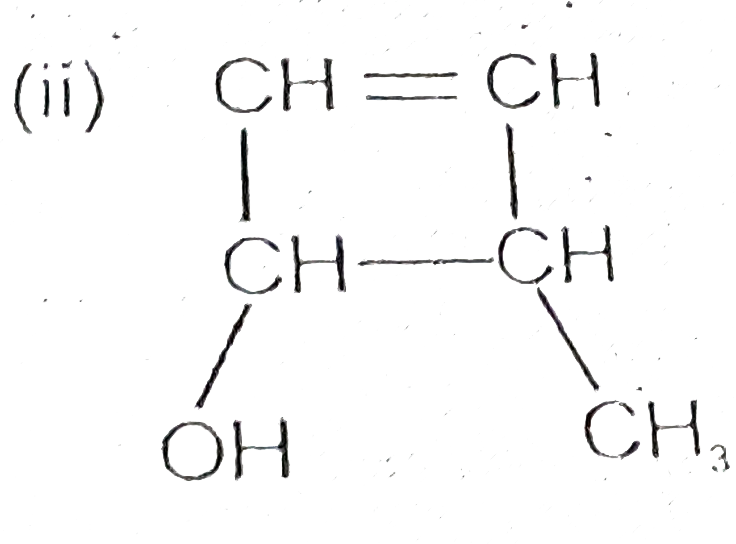30 g of CH3MgBr reacts with excess of CH3CH2CH2OH forming xg of a gas. What is the value of x?
To solve the problem, we need to determine the mass of methane gas (CH₄) produced when 30 g of CH₃MgBr reacts with excess CH₃CH₂CH₂OH (propanol).
1. Identify the Reaction:
The Grignard reagent CH₃MgBr reacts with propanol (CH₃CH₂CH₂OH) to produce methane (CH₄) and a magnesium alkoxide (CH₃CH₂CH₂OMgBr).
2. Calculate the Molar Mass of CH₃MgBr:
- Carbon (C): 12 g/mol
- Hydrogen (H): 1 g/mol (3 H in CH₃)
- Magnesium (Mg): 24 g/mol
- Bromine (Br): 80 g/mol
- Molar mass of CH₃MgBr = 12 + 3(1) + 24 + 80 = 119 g/mol
3. Calculate the Molar Mass of CH₄:
- Carbon (C): 12 g/mol
- Hydrogen (H): 1 g/mol (4 H in CH₄)
- Molar mass of CH₄ = 12 + 4(1) = 16 g/mol
4. Determine the Amount of CH₄ Produced from 119 g of CH₃MgBr:
From the stoichiometry of the reaction, 119 g of CH₃MgBr produces 16 g of CH₄.
5. Calculate the Amount of CH₄ Produced from 30 g of CH₃MgBr:
Using the ratio from the previous step:
Amount of CH₄ from 30 g of CH₃MgBr=(16 g CH₄119 g CH₃MgBr)×30 g CH₃MgBr
=16×30119≈4.03 g
6. Conclusion:
The value of x (the mass of gas produced) is approximately 4 g.
Final Answer:
The value of x is 4 g.
The Grignard reagent CH₃MgBr reacts with propanol (CH₃CH₂CH₂OH) to produce methane (CH₄) and a magnesium alkoxide (CH₃CH₂CH₂OMgBr).
- Carbon (C): 12 g/mol
- Hydrogen (H): 1 g/mol (3 H in CH₃)
- Magnesium (Mg): 24 g/mol
- Bromine (Br): 80 g/mol
- Molar mass of CH₃MgBr = 12 + 3(1) + 24 + 80 = 119 g/mol
- Carbon (C): 12 g/mol
- Hydrogen (H): 1 g/mol (4 H in CH₄)
- Molar mass of CH₄ = 12 + 4(1) = 16 g/mol
From the stoichiometry of the reaction, 119 g of CH₃MgBr produces 16 g of CH₄.
Using the ratio from the previous step:
Amount of CH₄ from 30 g of CH₃MgBr=(16 g CH₄119 g CH₃MgBr)×30 g CH₃MgBr
=16×30119≈4.03 g
The value of x (the mass of gas produced) is approximately 4 g.
The value of x is 4 g.
Similar Questions
Knowledge Check
When 20 g of a compound (A) = M.F. =C4H10O4reactswithexcessofCH_(3)MgBr,14.6LofCH_(4) is obtained at STP. What is structural formula of (A) ?
ACH2−OH|(CH−OH)2|CH2−OHB CH2OH |HO−CH2−C−CH2OH | OHC DBoth (a) & (b)
DBoth (a) & (b)CH2−OH|CH−OH+CH3MgBr(Excess)→xCH4|CH2−SH
What is the value of x in the above reaction ?A1B2C3D4CH3CH2−OH can be converted to CH3CH2CN by the following reactions :
ACH3CH2OH+KCNΔ−−→BCH3CH2OH+HCNΔ−−→CCH3CH2OHTsCl−−→KCN−−→DCH3CH2OHSOCl2−−−→KCN−−→
On taking 60 g CH3COOH and 46g CH3CH2OH in a 5 lit. flask in tle presence of H3O+ (catalyst), at 298K 44 g of CH3COOC2H5 is formed at equilibrium. If amount of CH3COOH is doubled without affecting amount of CH3CH2OH then, CH3COOC2H5 formed is
View SolutionWhich compound is formed when CH3OH reacts with CH3MgX ?
View SolutionThe IUPAC name of CH3−CH(OH)−CH2−C(OH)(CH3)2 is :
View SolutionCH3.CH2CH2Claq.KOH−−−−→CH3CH2CH2OH The reaction is
View SolutionExcess of CH3COOH is reacted with CH≡CH in presence of Hg2+, the product is -
View Solution

